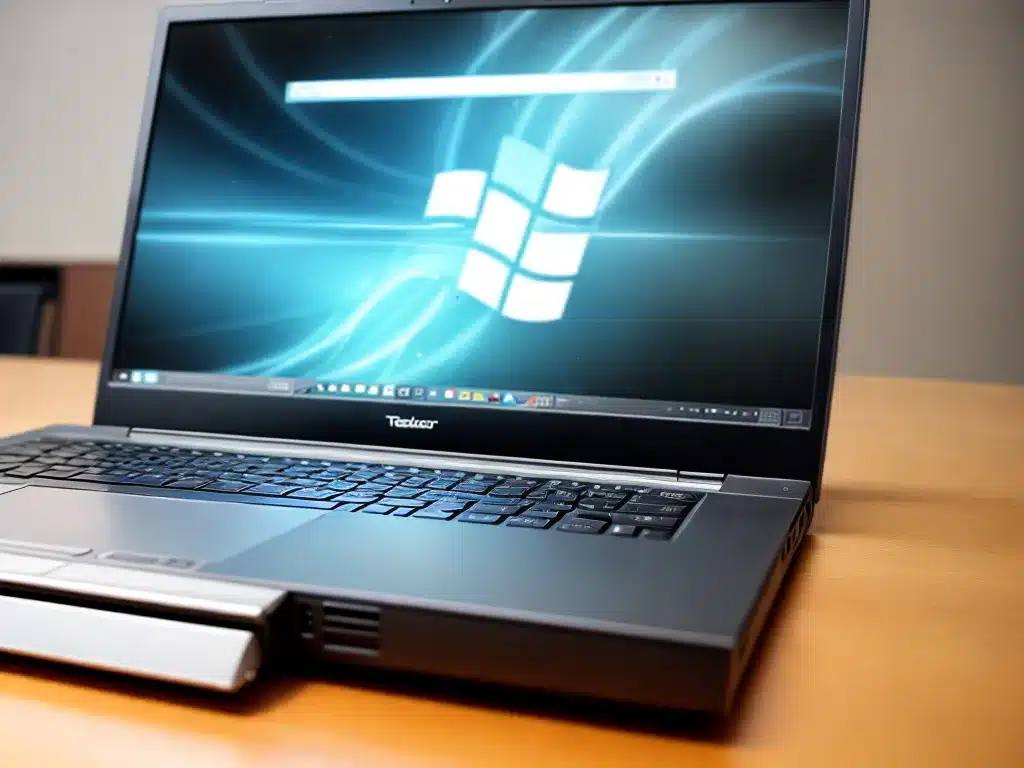
1. Increase RAM
Increasing your laptop’s RAM (random access memory) is one of the best ways to give an old laptop a speed boost. RAM is the short-term memory your computer uses to run programs and browse the web. Upgrading from 4GB to 8GB of RAM can make a huge difference in performance.
To upgrade your RAM, you’ll need to purchase a RAM module that is compatible with your laptop and follow the instructions to open up your laptop and insert the new RAM. It’s a relatively easy upgrade anyone can do themselves. Just be sure to ground yourself before handling computer components to avoid static discharge.
2. Add an SSD
Replacing your laptop’s old spinning hard drive with a solid state drive (SSD) is a very effective upgrade. SSDs have no moving parts and are much faster than traditional hard drives. Boot times will be significantly reduced with an SSD, and launching programs and loading files will feel snappier.
Cloning your existing hard drive to an SSD is the easiest way to upgrade. You can use disk cloning software like Macrium Reflect to copy everything over before swapping out the old drive. Be sure to get an SSD that is compatible with your laptop.
3. Replace the Battery
If your laptop’s battery is old and worn out, it could be affecting performance. As batteries degrade over time, they don’t hold a charge as well and may cause throttling issues. Replacing an old laptop battery can restore normal CPU performance and extend the time you can use your laptop unplugged.
Search online to find a replacement battery compatible with your laptop’s model. Follow any included instructions to safely remove the old battery and install the new one. Properly recycling lithium-ion batteries is important for safety and the environment.
4. Upgrade to an SSD + More RAM
For optimal speed improvements, consider combining an SSD upgrade with adding more RAM. The SSD will help boot times and general responsiveness, while the RAM boost will allow you to multitask and run demanding programs better.
Aim for at least 8GB of RAM if you currently have only 4GB. And get the largest SSD you can reasonably afford – going from a 128GB SSD to a 500GB or 1TB model means you can store more programs and files on the faster drive.
5. Perform a Clean Install of Your OS
If your laptop is running slowly despite sufficient RAM and an SSD, a clean install of your operating system can help. Over time, residual files, outdated drivers, and fragmented data can slow things down.
Back up any important data first, then boot into recovery mode or from your OS install disk to wipe your drive and do a fresh OS installation. You may need your license key to reactivate Windows or macOS. Be sure to install the latest OS updates and drivers.
6. Update Your Software and Drivers
Keeping your laptop’s software and drivers fully up to date is key to avoiding performance issues. Outdated software can have bugs and inefficiencies that lead to slowdowns over time.
Open Windows Update or the Mac App Store and install any available OS and firmware updates. Also, visit your laptop manufacturer’s website and update essential system drivers like chipset, GPU, and others. Keep everything updated and your laptop will run faster.
7. Adjust Visual Effects
Windows and macOS feature visual effects that can look nice but also consume resources. Try dialing back these effects for improved speed.
On Windows, disable transparency effects and animations in the Performance Options settings. On a Mac, reduce transparency and motion in the Accessibility settings. Toning down visual frills can result in a snappier experience.
8. Uninstall Unneeded Programs
Many laptops come with pre-installed trial software and unnecessary programs. Removing programs you don’t need can help speed things up and free up drive space.
Carefully go through your installed applications on both Windows and Mac and uninstall programs you never use. Be cautious about removing anything that looks important – when in doubt, search online first. Less bloatware equals better performance.
9. Check for Malware and Viruses
Malware infections are a common source of laptop slowdowns. Spyware and viruses running in the background drag down your system. Use free tools like Malwarebytes to scan for malicious software and remove any threats detected. Also update your antivirus program regularly.
Restarting after a full scan can clear out any lingering malware impacts. A clean system runs faster. Be careful what websites you visit and files you download to avoid future malware problems.
10. Clean Up Your Hard Drive
A laptop hard drive that’s nearly full can cause laggy performance. Make sure there’s at least 20% free space available.
Remove unneeded files, clear cached app data, and delete temporary system files using the Disk Cleanup utility on Windows. On a Mac, empty the Trash, remove unneeded Photos and GarageBand files, and clear caches with an app like CleanMyMac. A tidy hard drive minimizes slowdowns.












